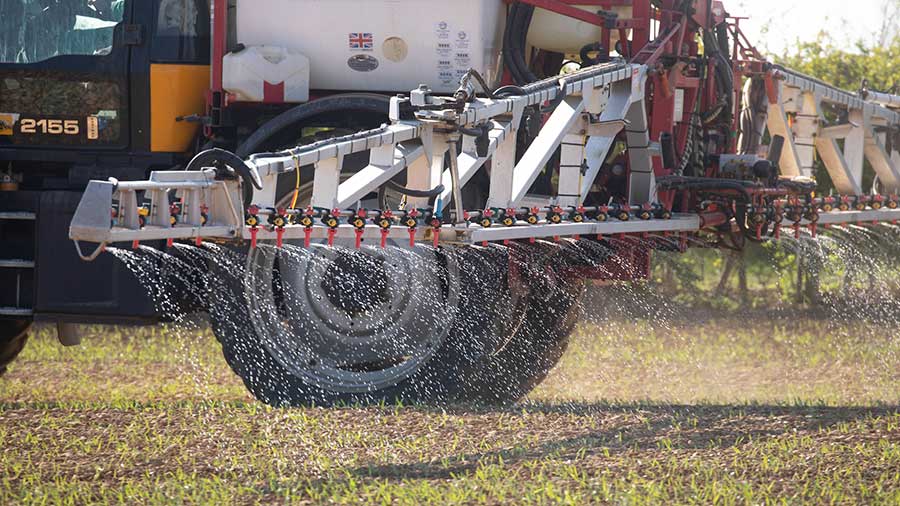World’s first foliar fertiliser made from recycled batteries
 © Tim Scrivener
© Tim Scrivener The world’s first zinc and manganese foliar fertiliser made from recycled batteries is now available to UK growers as an effective micronutrient spray.
Up to 80% of trace elements found in alkaline batteries can be reused, which prompted Finnish crop product manufacturer Tracegrow to develop a method that extracts, purifies and recycles the zinc and manganese found in batteries – both of which are important crop micronutrients.
The product, known as ZM-Grow, is a sulphate-based concentrate, containing 60g/litre of zinc, 67g/litre manganese and 75g/litre sulphur and is now approved for use in the UK for both conventional and organic farming systems.
See also: What Hereford Monitor Farms’ machinery cost review reveals
Circular economy fertiliser
Trialled and distributed by Hutchinsons crop production specialists over the past two seasons, feedback from the foiliar spray has been positive.
Tim Kerr, the group’s fertiliser manager, recommends applying a rate of 2-3 litres in 200-400 litres of water. He notes that it is easy for growers to use, helps to tick environmental boxes and promotes crop growth.
“ZM-Grow is an exciting product and branded as a circular economy fertiliser – it ticks all of the boxes for sustainability, offers a reduced carbon footprint while also providing a high-quality, effective micronutrient foliar fertiliser”.
In trials, the product was found to be chemically stable, and users experienced no issues with mixing or applying the spray. “It flows smoothly through filters and spray nozzles and doesn’t block them up,” he says.
“We know that balancing micronutrition can help improve nitrogen efficiency and ZM-Grow can make this difference, at a time when nitrogen prices are at an all-time high.”
How is ZM-Grow manufactured?
First, alkaline batteries are collected and crushed to form an alkaline mass, which undergoes mechanical pre-treatment stages.
Once this is complete, the alkaline mass is transferred to a leaching process, where solids are separated and the solution is purified, with any potential unwanted substances removed.
After purification, the generated solids are separated, and the solution is neutralised to a pH of about 4.
Further adjustments of the various constituents may be made to the finished product if required, but the end result is an ecological, world-first, recycled foliar fertiliser.

